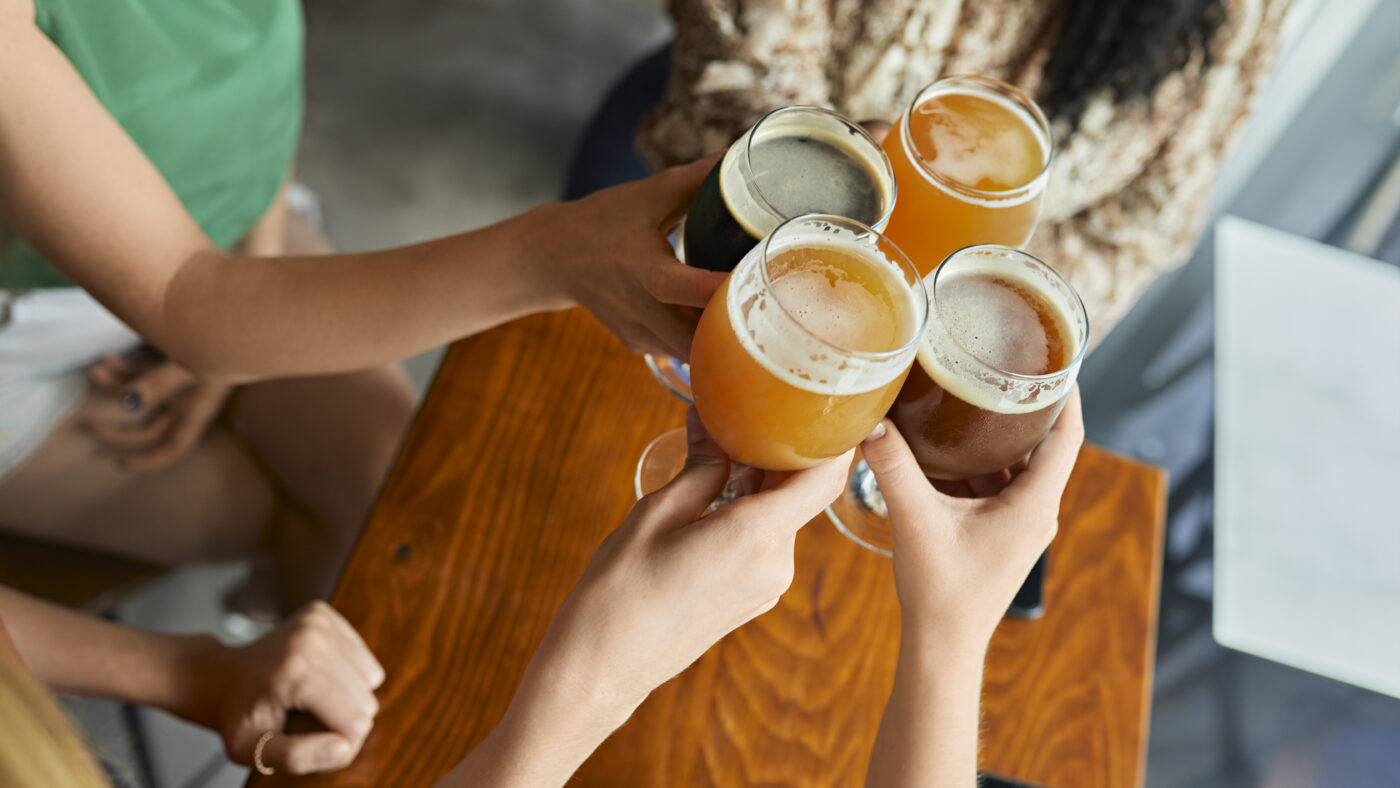There are few small pleasures in life that the Government has not lately committed itself to curbing, but one of them is beer. While Scotland and Wales recently introduced minimum unit pricing, only last year, Westminster cut back on alcohol duty – defending the role of pubs in British life.
Indeed, if there is an arch opponent to the development of British beer, it might well be a trade body funded by the leading alcohol companies. Since its inception in 1989, the Portman Group has campaigned for ‘responsible drinking’, heading off any corporate misbehaviour that might encourage the Government to call last orders.
To this end, it has recently been telling off upstart beer brands for their wackier ideas about packaging. Only this month, the group’s Independent Complaints Panel (ICP) chastised Beak Brewery over its use of cartoons on its can and bottle designs.
‘While it was clear that the producer did not intend to market the drinks to under-18s, the panel found that several products breached the code in this respect following a complaint from a member of the public,’ said panel Chair Rachel Childs, citing the Portman Group’s Code of Practice on the Naming, Packaging and Promotion of Alcoholic Drinks.
Out of nine Beak beers reviewed, six were found to ‘have a particular appeal to under-18s’, with the remainder spared due to not featuring childish cartoon characters. It will come as some relief to the brewer, which had warned that the panel risked coming to the conclusion that ‘the inclusion of primary colours and simple line drawn characters were inherently problematic’ in craft beer.
It’s nonetheless true that the Portman Group’s complaints process has been chipping away at the creative freedom which has made craft beer designs such a joy. While Beak may be the first brewery to have its can designs compared to Roger Hargreaves’ Mr. Men series, plenty of other companies have faced scrutiny for their use of colourful cartoons, names and artwork.
Only in January, the ICP ruled against Yonder for its Pink Lemonade sour beer. An unwitting parent had bought the product for their 13-year-old daughter, seemingly without noticing the 4% ABV marked on the front of the can or the Drinkaware warnings on its reverse.
The complainant called the product’s branding ‘completely irresponsible’, claiming it had ‘direct appeal to young girls’ and that the brewers were ‘totally hiding its alcoholic content’. While the ICP rejected the direct appeal to young girls, it was happier to remonstrate on alcohol cues, even though anybody who could read should have seen them.
Other recent targets of public complaints – assuming none of the concerned citizens are working undercover for rival breweries – include BrewDog’s bird pilot mascot for its Wingman beer, Northern Monk’s Rocket Lolly design, and Tiny Rebel’s range mimicking energy drinks.
In the case of Rocket Lolly, one dad reported that when his 4-year-old son saw him drinking the beer, ‘he became very upset that he wasn’t allowed to try it, even after we made clear it was beer.’ Apparently the design’s appeal was ‘so strong that [my son’s] upset about not being permitted a drink that he would ordinarily tell you off for pretending to offer him.’
In this case, the ICP agreed that the design was too appealing to minors, and that the alcohol warnings weren’t clear enough.
As for Tiny Rebel’s range, one complainant noted the brewery’s Primed IPA was ‘based clearly on Prime, the hot new drink aimed towards children’, while its Monstar IPA mimicked the Monster energy brand. The ICP told the brewer that the drinks’ packaging could appeal to under-18s and encourage irresponsible consumption.
Of course, most grocers won’t sell high-caffeine drinks to those aged under 16. And while a kid from the lower sixth might be able to buy a can of Monster, buying Monstar IPA or any other beer would prove a tougher challenge, with supermarkets and convenience stores being likely to check IDs for fear of losing their licence to sell alcohol at all.
In the case of beer, the market has increasingly skewed towards the craft section, in no small part due to the innovative branding that reflects the unusual flavours and styles. As Beak noted in its complaint submission, moving away from ‘stereotypically male-centric imagery’ helped it draw in consumers beyond the traditional beer market.
That’s a good thing for British brewers, to say nothing of the artists and designers they employ in these efforts. And given that some wine merchants acknowledge their own aisles could do with more creativity, if anything alcohol manufacturers should be experimenting more with their packaging designs.
Plenty of challenger brands are doing just that. But they risk being hobbled by busybodies from the public, with the aid of the Portman Group. Rather than indulge those who can’t or won’t read the labels properly, the ICP should ignore these complaints, freeing booze companies to keep the taps turned on.
Click here to subscribe to our daily briefing – the best pieces from CapX and across the web.
CapX depends on the generosity of its readers. If you value what we do, please consider making a donation.


